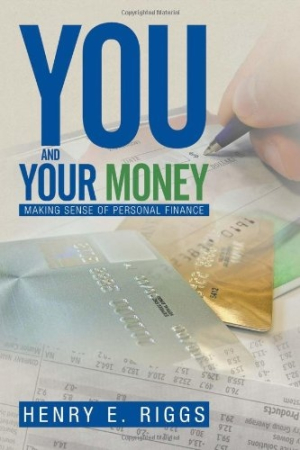It looks like you've stumbled upon a page meant to be read by our code instead of viewed directly. You're probably looking for this page.
You and Your Money
Making Sense of Personal Finance
In the preface of his book, retired CFO and professor Henry Riggs points out that the American educational system fails to teach “financial literacy.” None of the courses offered in high school, college, or even graduate school, writes the author, “are comprehensive in addressing personal finance. This book seeks to fill that void.” And it does.
Riggs includes virtually every issue of importance related to personal finance in nine well-written, carefully researched chapters that are intelligently organized so the reader can pick and choose subject areas of interest. He covers topics such as income, net worth, retirement, insurance, sources of credit, and investment markets, among many others. Each chapter is comprehensive in nature yet easy to understand. Riggs has made brevity an art form; this could have been a much longer book, but he includes just the right amount of financial detail without overwhelming the average reader.
Chapter two, “Savings and Insurance,” is a good example. Riggs pairs these topics in the same chapter because they “both represent forms of protection against risk.” The chapter includes a brief explanation of risk protection, followed by a discussion of savings and savings vehicles, including retirement savings such as Social Security, pensions, and IRAs. The portion of the chapter related to insurance is an overview of medical, auto, homeowner’s, general liability, long-term disability, and life insurance, as well as estate planning.
Riggs is careful to define financial terms, explain the use of each financial vehicle, and provide authoritative yet objective advice. When discussing savings, for instance, Riggs writes, “A prudent and often cited rule of thumb is that one should hold ‘emergency savings’ equal to six months of expected spending on routine living expenses. However, the appropriate savings amount depends on the circumstances of the individual or family.”
The final chapter, “Personal Investing,” is the culmination of the book. Here Riggs reminds the reader of the information covered in the first eight chapters and then talks about key concepts of personal investing, among them diversification and risk tolerance. He also discusses types of investment assistance, how to compare investment returns, and income tax considerations. The author concludes with an afterword that is an entertaining compilation of quotes related to investing.
This highly readable and useful “textbook” is enhanced by a well-designed interior. There are a number of subheadings, passages of bulleted text, relevant charts and graphs, and review questions at the end of each chapter. The author also makes use of an excellent technique: calling out definitions of key financial terms in the page margins for easy reference.
You and Your Money is sure to help anyone, young or old, who wants to be able to navigate the world of personal finance, make the best investment choices, and preserve capital.
Reviewed by
Barry Silverstein
Disclosure: This article is not an endorsement, but a review. The publisher of this book provided free copies of the book and paid a small fee to have their book reviewed by a professional reviewer. Foreword Reviews and Clarion Reviews make no guarantee that the publisher will receive a positive review. Foreword Magazine, Inc. is disclosing this in accordance with the Federal Trade Commission’s 16 CFR, Part 255.
